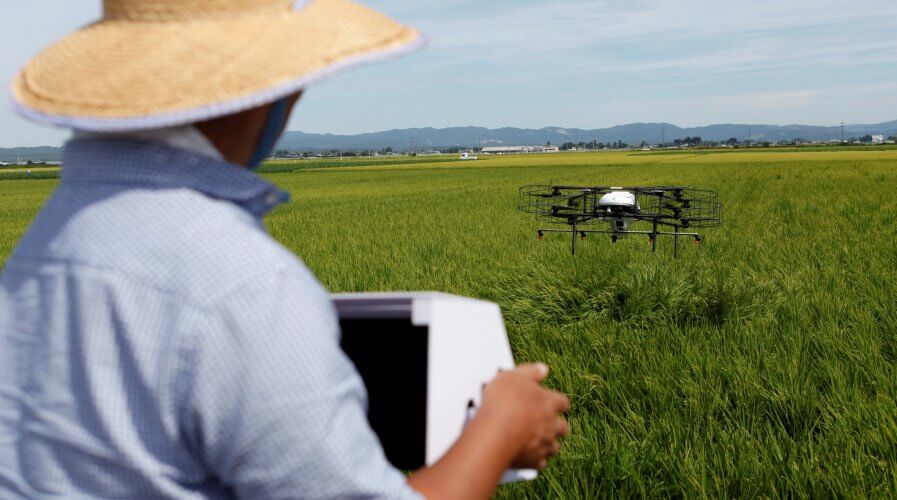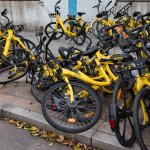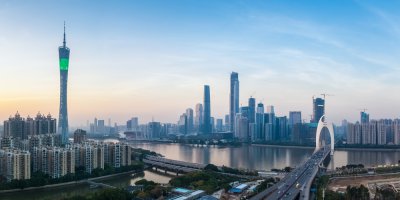
Nileworks Inc.’s automated drone flies over rice plants, spraying pesticide while diagnosing growth of individual rice stalks, during a demonstration in Tome, Miyagi prefecture Japan August 20, 2018. Picture taken August 20, 2018. Source: REUTERS/Yuka Obayashi
Drones are saving Japan’s rice fields and ageing farmers
DRONES are giving Japanese farmers a hand, as the rural farming population grows older.
Rice farmers in the country’s northeast have been testing drones that can help speed up manual farming processes.
As young people move to work in the cities, rural Japan is left to face the labor shortage — and farming drones serve to bridge that gap.
Traditionally, farmers had to lug heavy tanks to apply pesticides and fertilizers to paddy fields. A job that takes a human more than an hour, drones can do the same in 15 minutes.
One of the cities that are trialing the use of farming drones is Tome. Located in the Miyagi prefecture, Tome is one of the largest producers of rice for the region, contributing more than US$630 million to the economy (according to official statistics).
However, the population in Tome has been rapidly decreasing, while the number of elderly has continued to rise. Today, over 30 percent of the city’s population is over the age of 65, official numbers stated.
Using drones, the local agricultural cooperative JA Miyagi Tome hopes to raise productivity and income, while easing the physical burden on the elderly farmers.
In Tome, the farmers are, on average, 67-68 years old, said Isamu Sakakibara, the Head of JA Miyagi Tome, speaking with Reuters.
There have been other technologies available to tackle the concerns revolving around an aging population of farmers. However, solutions such as radio-controlled mini-helicopters are costly, with a price tag of about US$130,000, including the spray equipment.
In comparison, drones are much smaller and cheaper, coming in at around US$35,000.
One of the drone developers, Nileworks, has been working with local authorities to allow operators to fly its drones without a license.
The company produces drones that can be controlled with an iPad and runs on simple to operate ‘mapping software’. It aims to lower costs for rice farming by as much as 75 percent.
More than just a replacement for manual labor, drones can also provide analysis of the rice stalks, to help farmers determine the optimum amount of pesticide or fertilizer needed. Farmers can also estimate the crop size and judge their input needs.
Another drone maker offering farming services is SkymatiX, a venture that is jointly owned by Mitsubishi and Hitachi.
Some local farmers believe that technology can help smash through stereotypes of farming being hard labor. Mechanization and other emerging technologies can help change people’s perception towards farming and draw young people to farming sectors.
READ MORE
- Safer Automation: How Sophic and Firmus Succeeded in Malaysia with MDEC’s Support
- Privilege granted, not gained: Intelligent authorization for enhanced infrastructure productivity
- Low-Code produces the Proof-of-Possibilities
- New Wearables Enable Staff to Work Faster and Safer
- Experts weigh in on Oracle’s departure from adland




